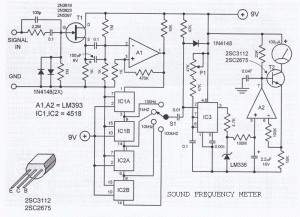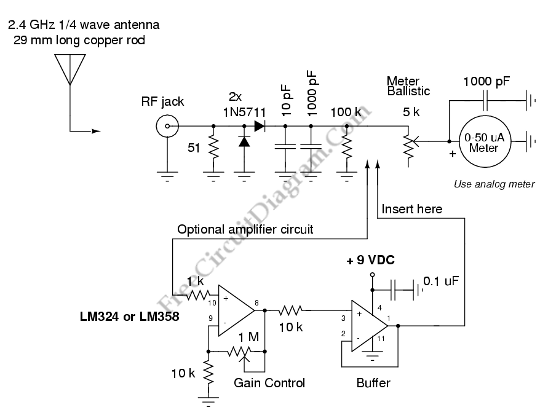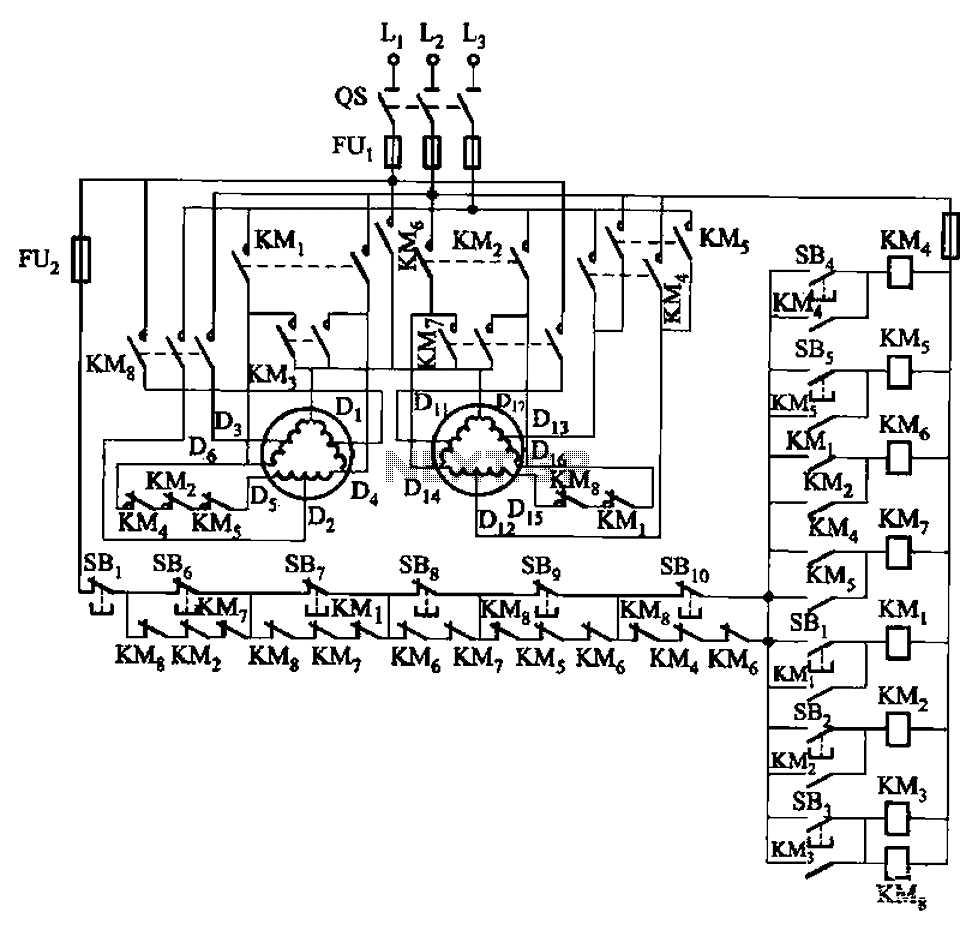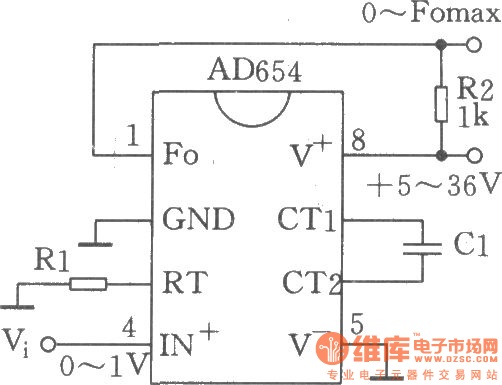
Sound Frequency Meter Circuit

This sound frequency meter circuit is simple to build and can be constructed in a portable format. It can measure frequencies with a minimum level of 10 mV.
The sound frequency meter circuit is designed to provide an effective and user-friendly means of measuring audio frequencies in a compact and portable configuration. The circuit typically employs a microphone to capture sound waves, which are then converted into electrical signals. The primary function of the circuit is to measure sound frequencies, starting from a minimum input voltage level of 10 mV, ensuring it can detect a wide range of audio signals.
Key components of the circuit may include an operational amplifier (op-amp) for signal amplification, a microcontroller or frequency counter for processing the amplified signals, and a display unit, such as an LCD or LED, to present the frequency readings. The op-amp boosts the input signal from the microphone, allowing for better detection and measurement of lower frequency sounds.
The microcontroller processes the amplified signal to determine the frequency by counting the number of cycles within a specific time frame. This data is then sent to the display unit, where users can easily read the frequency measurement. Additionally, the circuit can be designed with a portable power supply, such as batteries, ensuring that it can be used in various environments without the need for a fixed power source.
In terms of construction, the circuit can be laid out on a small printed circuit board (PCB) to facilitate ease of assembly and portability. Components should be selected for their compact size and low power consumption to maintain the circuit's portability. Proper shielding and grounding techniques should also be employed to minimize noise and ensure accurate frequency measurements.
Overall, the sound frequency meter circuit is a valuable tool for applications requiring frequency analysis, such as audio engineering, music production, and sound design, making it an essential addition to the toolkit of professionals in the field.This sound frequency meter circuit is simple to build and can be constructed in a portable format. In can measure frequencies with a minimum level of 10 mV. 🔗 External reference
The sound frequency meter circuit is designed to provide an effective and user-friendly means of measuring audio frequencies in a compact and portable configuration. The circuit typically employs a microphone to capture sound waves, which are then converted into electrical signals. The primary function of the circuit is to measure sound frequencies, starting from a minimum input voltage level of 10 mV, ensuring it can detect a wide range of audio signals.
Key components of the circuit may include an operational amplifier (op-amp) for signal amplification, a microcontroller or frequency counter for processing the amplified signals, and a display unit, such as an LCD or LED, to present the frequency readings. The op-amp boosts the input signal from the microphone, allowing for better detection and measurement of lower frequency sounds.
The microcontroller processes the amplified signal to determine the frequency by counting the number of cycles within a specific time frame. This data is then sent to the display unit, where users can easily read the frequency measurement. Additionally, the circuit can be designed with a portable power supply, such as batteries, ensuring that it can be used in various environments without the need for a fixed power source.
In terms of construction, the circuit can be laid out on a small printed circuit board (PCB) to facilitate ease of assembly and portability. Components should be selected for their compact size and low power consumption to maintain the circuit's portability. Proper shielding and grounding techniques should also be employed to minimize noise and ensure accurate frequency measurements.
Overall, the sound frequency meter circuit is a valuable tool for applications requiring frequency analysis, such as audio engineering, music production, and sound design, making it an essential addition to the toolkit of professionals in the field.This sound frequency meter circuit is simple to build and can be constructed in a portable format. In can measure frequencies with a minimum level of 10 mV. 🔗 External reference





